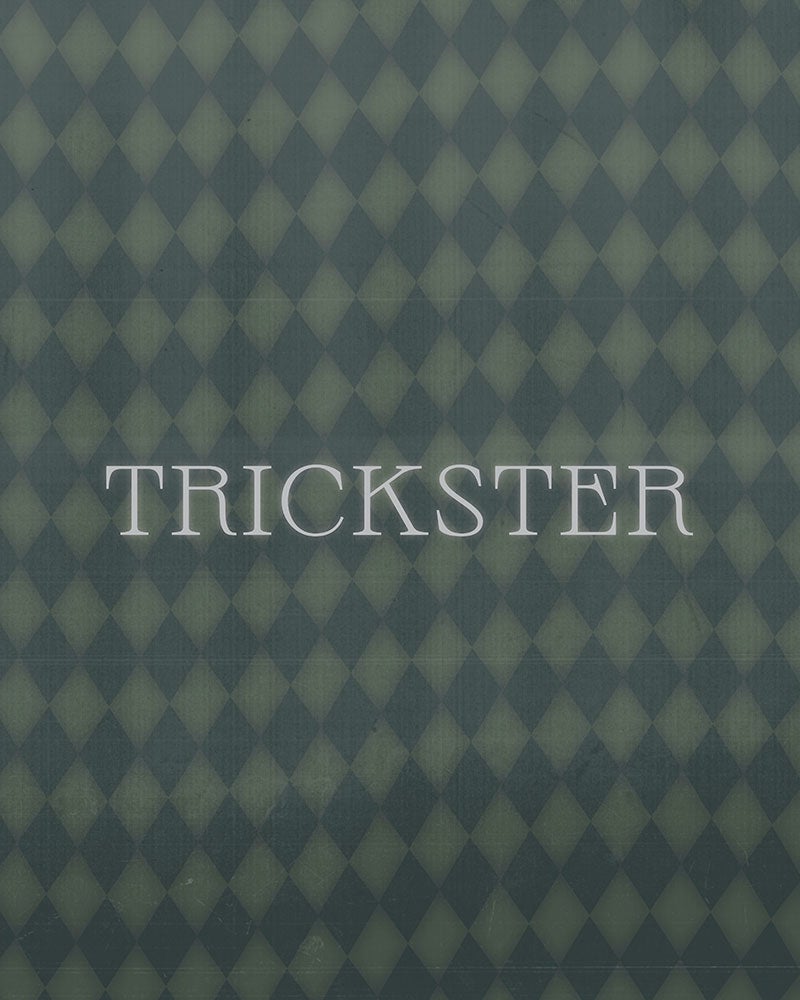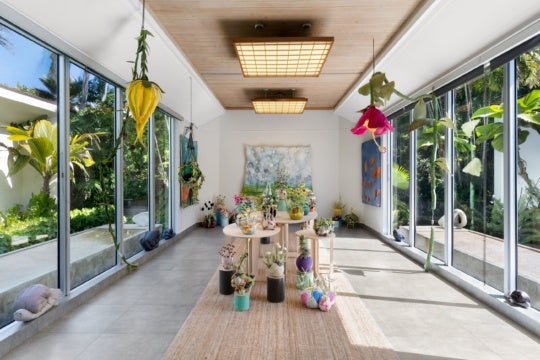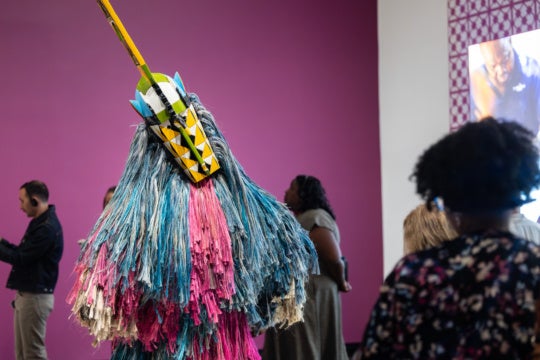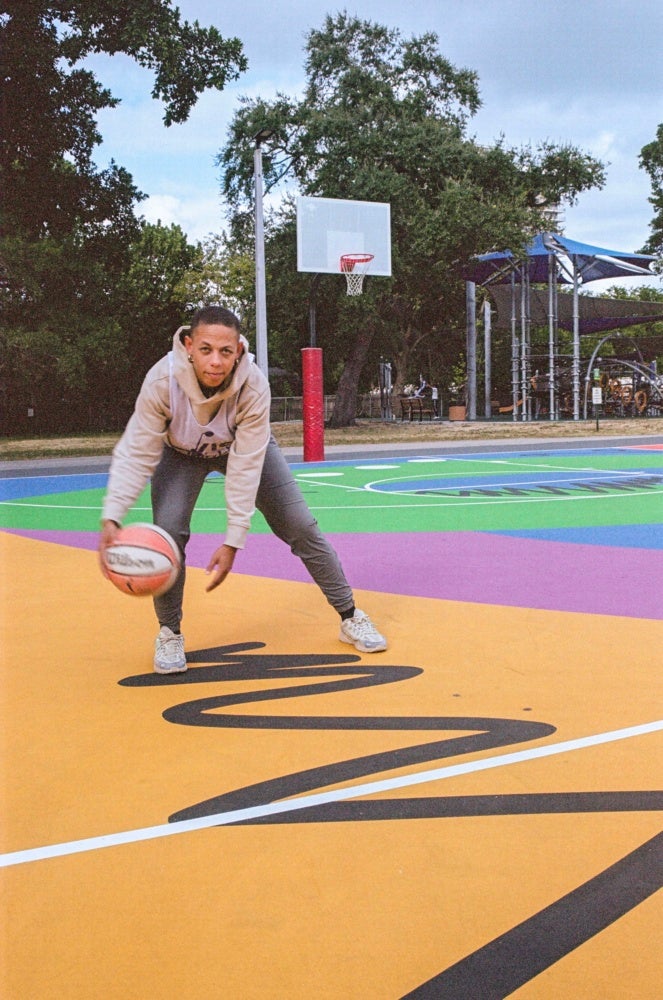
In the palms of one’s hands, sports can be played only by lifting a few fingers. Online, there’s options for betting on who will win the fantasy league or pressing a PlayStation controller button to beat the opposing team. In these settings, the stage is virtual and the game is automated. Fantasy is a form of speculation and in speculation, there is the power to make something from nothing. What happens when the speculative merges with the tangible and playable in real time? What happens when the stage is a high school basketball court in Miami’s Little Havana that is vacant for the summer? For conceptual artist Najja Moon, creating the world of Miami VIS—a para-fictional WNBA franchise formed in 2024 by Moon and her partner, Jaki Goldner—combined her fascination with the pseudo-real and her love for basketball seamlessly.
In Moon’s words, “The Miami VIS is a recreational basketball team. We play in local leagues, just like in terms of recreational basketball, whether it be like a YMCA League, or city parks and recreation. In Miami, there’s only two structured women’s basketball systems like that, which our team plays in both of those ones in three-on-three leagues, and five-on-five leagues. We also enter our women’s team into the men’s leagues. We approach and treat every aspect of training, marketing, making merch, and finding sponsors as though we were competing in the WNBA. Even when we compete in men’s leagues, we treat that as though it’s practice. We frame everything under the guise of being a pro basketball team. Because we don’t break character, people have realized the possibility of pursuing the dream in real life.”
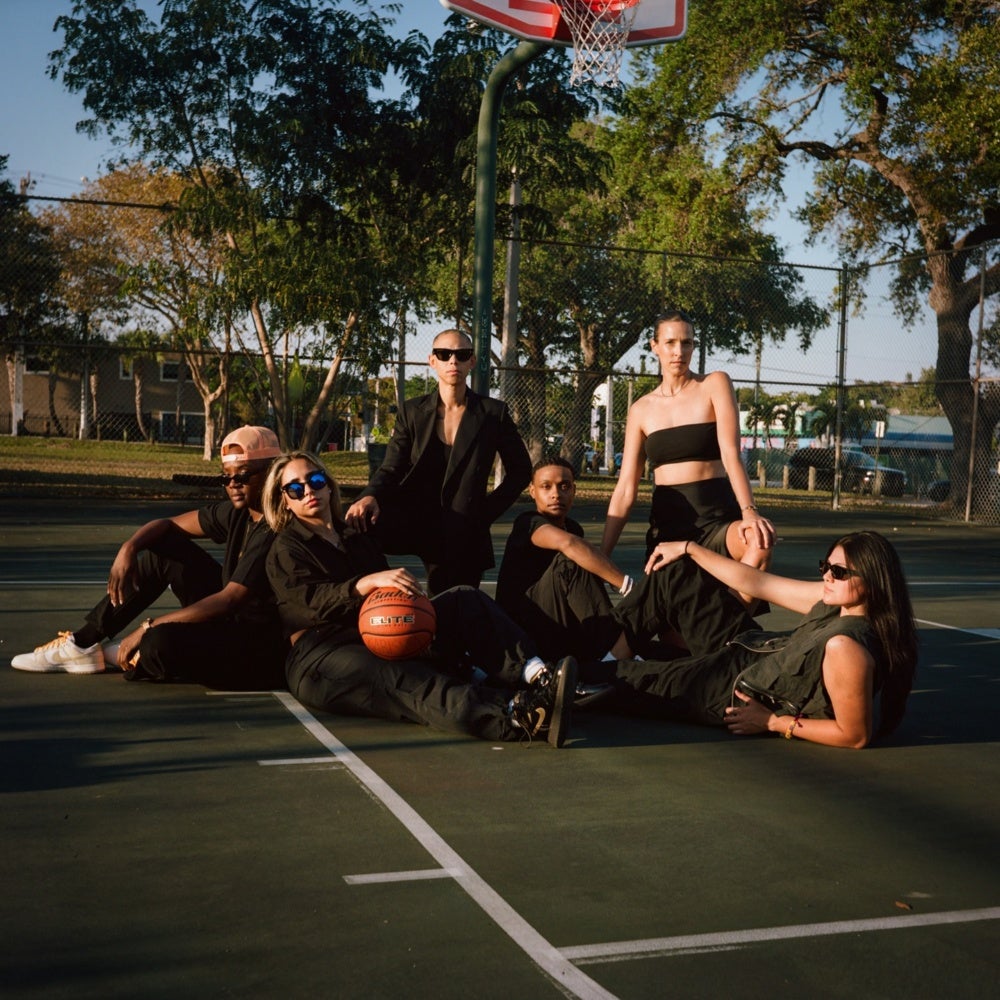
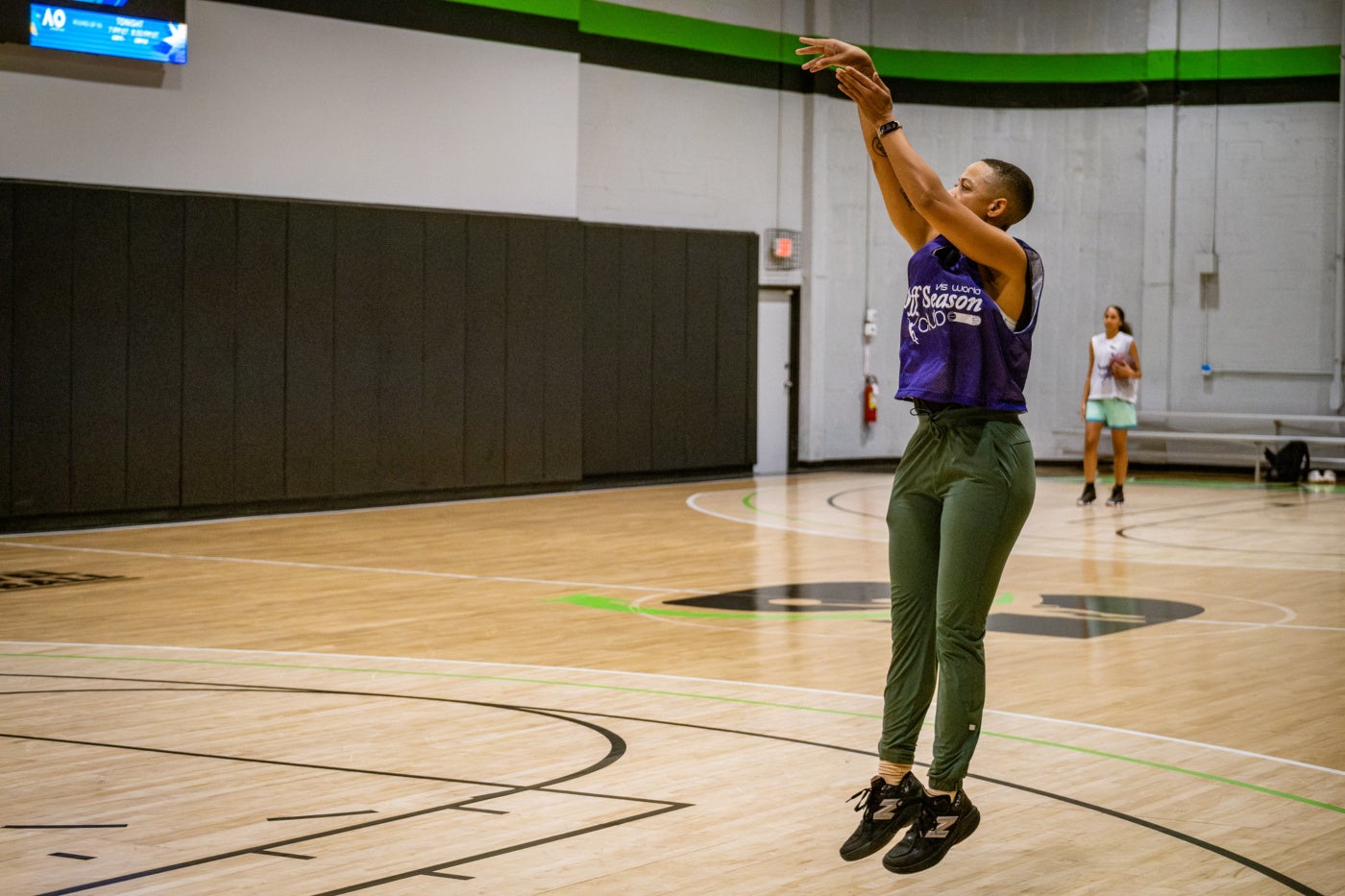
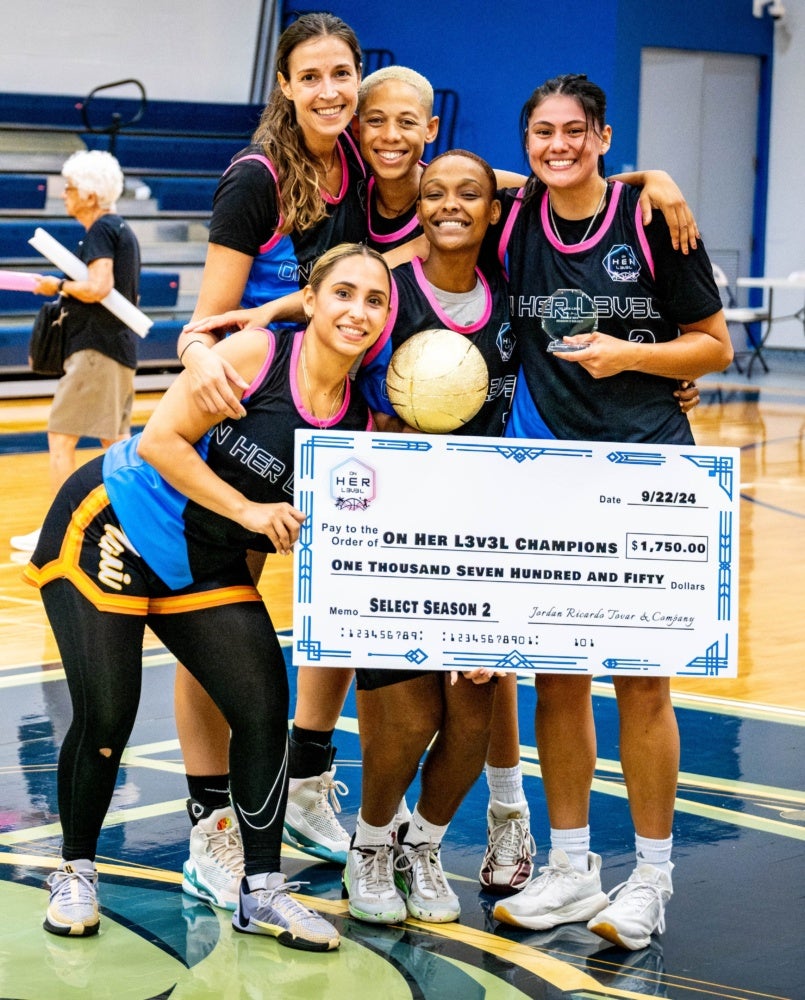
Born and raised in Durham, North Carolina, by a preacher and a family of musicians, Moon first aspired to become a professional basketball player. Scribbled plays became sketches in the notebooks she kept while on the Division II basketball team at Pfeiffer University in Misenheimer, N.C. These early playbooks became freehand drawings and then dream scenarios as she continued to play ball. She graduated from Pfeiffer with a degree in studio art, part of the first graduating class with that major. Moon recounted that at the time the dream of playing professional basketball felt like a wayside path to nowhere, with recruitment into the WNBA nonexistent outside of the major hub of Charlotte.
After moving to Miami in 2009, Moon began a conceptual art practice; though she retained her interest in athletics. She also co-founded the BLCK Family Collective with a cohort of Miami artists, which she shared was a formative moment: “Not having a traditional arts education background is my superpower,” the artist stated. In the gestural drawings that Moon completed in the years that followed, her love for basketball is visible in the curves and dots of ink on paper. Streams of consciousness are translated onto paper surfaces. In the singular example There is no Separation Attempt #1 (2020), the movements of a basketball play appear as an abstract drawing, an outward manifestation of an inner calculated thought. Black loops and curves create a linear route across a white sheet of paper, as small dashes are scratched into this path. What looks like a bobby pin is juxtaposed with a right angle. The monochrome journey is layered with highlighter yellow downward arrows and abstract lines that can be inferred to be the paths to success.
Rather than preliminary sketches that lie within a playbook, Moon’s drawings are blueprints to scoring a goal. Her reinvention of basketball plays recalls the late architect Michael Graves, who described drawing as “a form of ‘tangible speculation,’ one that reveals traces of intentions and is imbued with visible intonations.”[1]
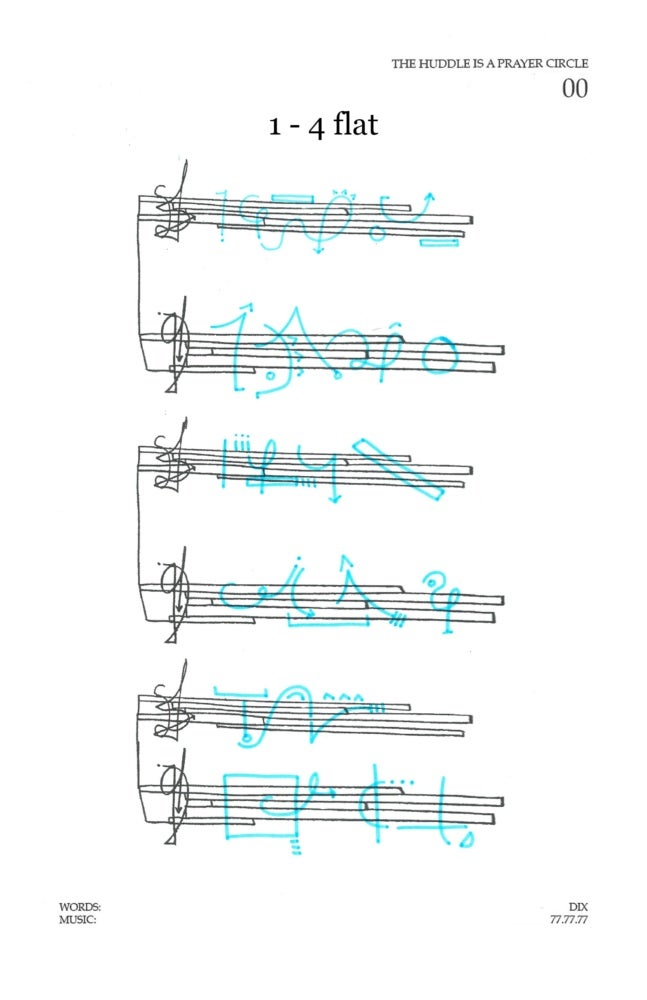
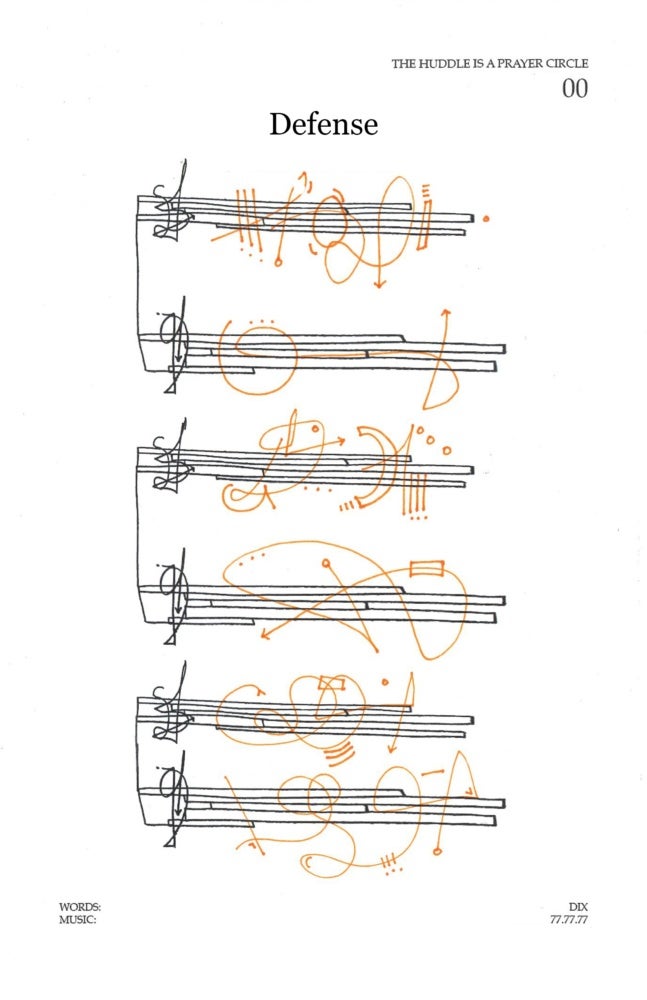
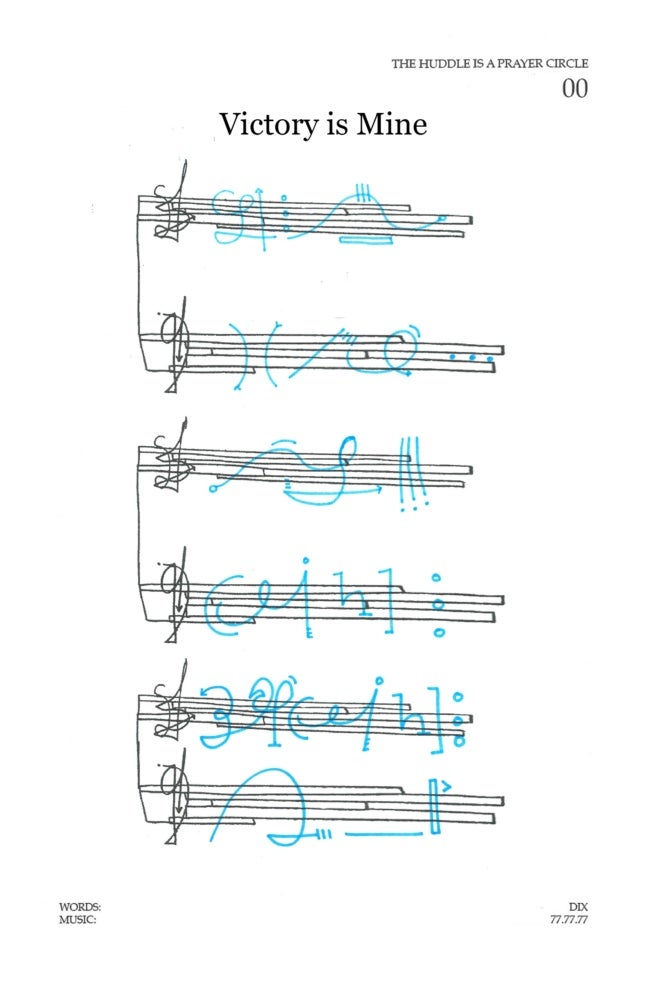
Moon noted researching John Cage’s sheet music and the notations made on dance choreography papers. She explained how Cage as a reference point emerged from an individual who attended an opening reception where her work was exhibited and, in viewing her drawings, recommended him as a source to investigate. She recalled, “It was a new way of translating my drawings and actually trying to read them as graphic scores. I was thinking about how if my mark-making is some kind of embodied knowledge that’s coming out like a gesture, that means something has happened before. It’s the same as the embodied knowledge of the griots telling stories over and over and over again, right?”[2]
Moon worked as a ball kid during Duke University’s college basketball season in the winter, and attended their women’s basketball camp every summer at Cameron Indoor Stadium. Meanwhile, her mother attended Duke’s Divinity School and was a minister of music at the New Bethel Missionary Baptist Church in Durham. Reflecting on her perspective as a preacher’s daughter and its link with music, Moon created the video performance The Huddle Is A Prayer Circle (2021–ongoing). Filmed by Miami-based photographer and filmmaker Terence Price II, the film features Moon’s mother leading a gospel as a group of local artists play basketball on a stage. The cacophony of voice and instruments encircles players as they ceremoniously dance around the stage. Moon said of the project, “I love the idea of people congregating together to focus on a common goal. . . . It is theater, and it’s theater that is intended to make you vulnerable and to submit before something higher than you. I think that’s beautiful.” The artist’s thoughts on the influence of faith are not reserved however. She noted, “I also understand that power has been used over and over again to manipulate people and hurt people. That’s fucked up.” That faith can hold both possibilities is an understanding that extends to basketball, which encompasses play both professional and local. “There’s also everything from the youth level to just randos meeting and doing this together for the first time in the park. Those rules that don’t have to be explained because you’re at church, right? The park is church.”
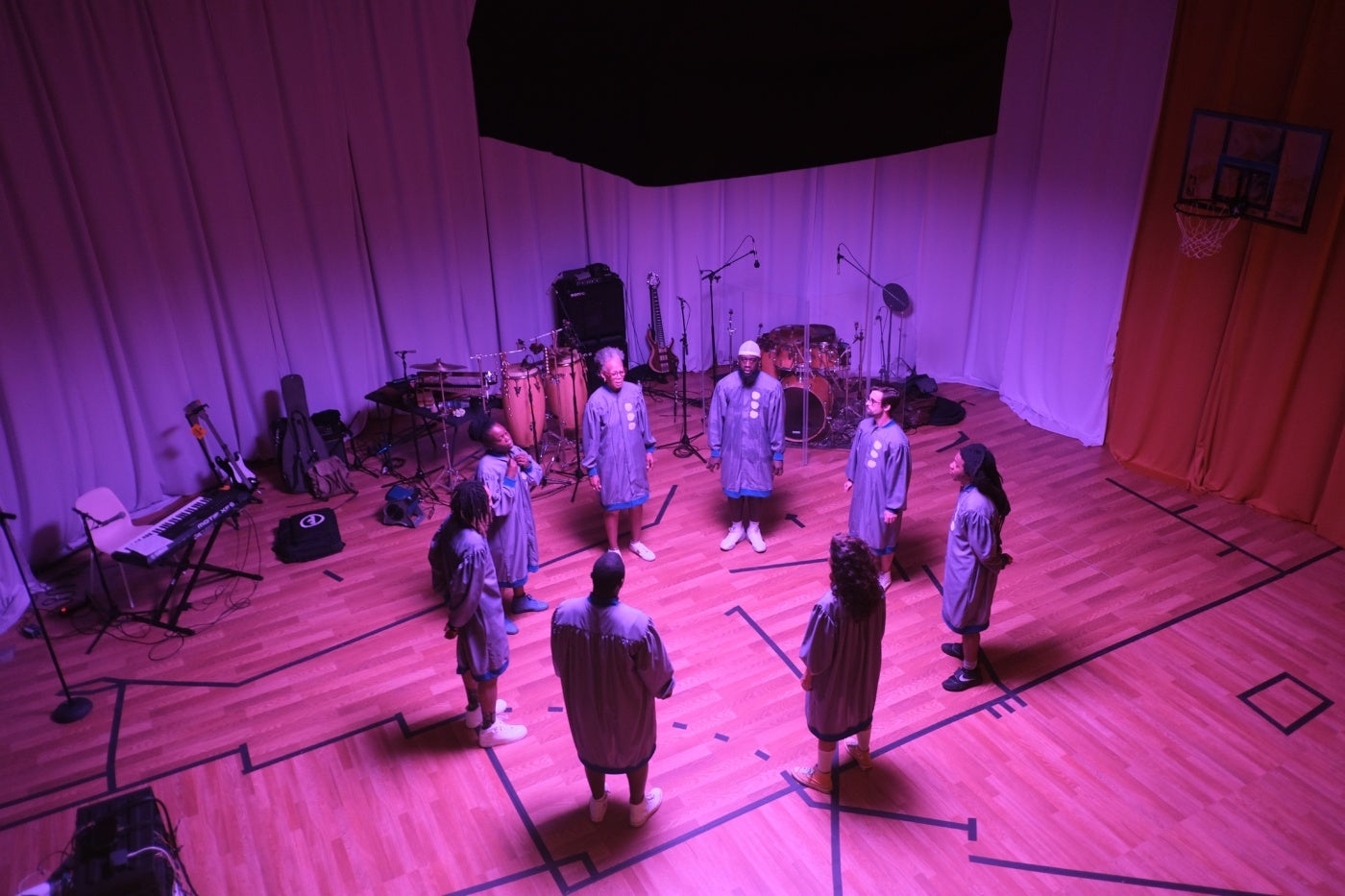
In working on The Huddle Is A Prayer Circle, which has yet to publicly debut, Moon lingered on the idea of additional basketball worlds—such as conceptual projects that played with motifs of the sport past a singular performance or happening— and that could exist in parallel existence to one another. She studied the work of Durham-born artist Ernie Barnes, whose depiction of movement prompted her to ask, “Is there something about being from this place, where music and faith and sport intersect, that we kinda stretch things this way?” In one of Barnes’s paintings, Slam Dunk (1970), three elongated figures reach through the air as one attempts to place the ball in the hoop. Reflecting on Barnes’s influence, Moon stated: “Every Black person I know has an Ernie Barnes print in their house. His work is the first art that I remember ever seeing. He’s from where I’m from.” Barnes’s forms, “how lyrical the gesture of the bodies,” informed Moon’s thinking for Miami VIS and the formation of its mythology, whether in logos or mascots. Moon recalled, “I thought of his paintings, and it was my first time seeing my mark-making in his figures. Whenever you see figures in any part of the branding, or anything related to the Miami VIS brand, they are reconfigurations of his paintings.” Thus, the logo of the Miami VIS was born.



Logos designed by Najja Moon for The Miami VIS. Photographs by and courtesy of Najja Moon.
Miami VIS functions as an organized team, at the same time that it operates as a meet-up for women wanting to work out and meet like-minded communities. Roles such as Chief Vibe Officer and Operations Manager are listed on the team’s official website, alongside statistics noting rebounds and points per game. Recruitment and drafting take place in the early summer, with practice sessions held regularly to ensure the team is ready to take on opponents before the season starts. The inaugural year of the Miami VIS, 2024, was coached by Andre Drummond, an NBA player who plays center for the Philadelphia 76ers. As the press contact for the team, Goldner announces the team’s partnerships through press releases and professional photographs and manages its social media presence, bolstering the team’s real-world perception.

For Moon, parafiction as a tool is a graceful entry point into taking basketball seriously. The competition is real. As the team plays and trains together across the season, conversations around how real or fake the world she has created is are sidelined for the actual act of playing basketball. The fourth wall is never broken, neither to assign a label to the team’s validity and presence in the world nor to explain its framework as a conceptual project. In the performance of the Miami VIS, the veil is only lifted when Moon speaks about the intentions of the work: She describes how spectators take fiction as fact, often more easily than the artists producing speculative work ever expect, as a result of the artist starting from a position of trust.
“There’s also everything from the youth level to just randos meeting and doing this together for the first time in the park. Those rules that don’t have to be explained because you’re at church, right? The park is church.”
In creating a world that is as real as it is speculative, Moon paves an alternative path as a practicing artist who once had to abandon her other goals for a more stable life. The dream of being a professional athlete is now coupled with the reality of being an artist. In the tricks and the possibility of transcending the physical limitations of what basketball can be—whether those owed to advanced age or the limited opportunities for femme-identifying players in the sport—there is hope. It is in the camaraderie between the players who jumped into the training without hesitation, the jerseys that are designed by hand to look as real as the WNBA, and the bleachers filled with local artists cheering on Moon as she plays game after game across the summer season.
Recently, Moon took on her largest physical project to date. Uncommon Routes, a painted basketball court at Legion Park off Biscayne Bay in Miami, fuses Moon’s sketching and community practices as she gathered friends and loved ones to paint the court collectively. Whether through Miami VIS or the public court, Moon’s world-building affords second chances for all generations to play the game. Stated inconspicuously on the Miami VIS website, on a page explaining the offseason training program, is a sentence that embodies the ethos of Moon’s practice: “Because no matter where you are in your basketball journey, the game still loves you back.”[3]
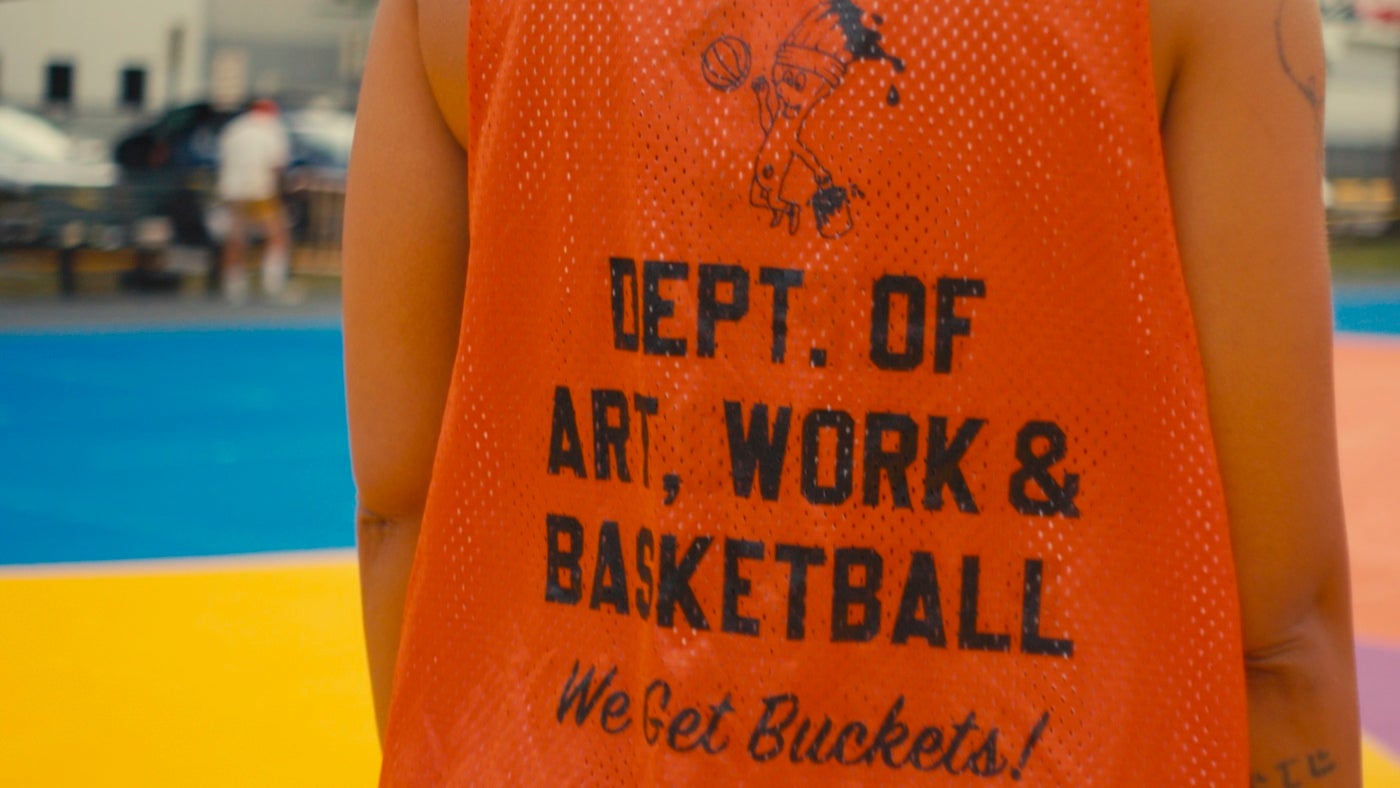
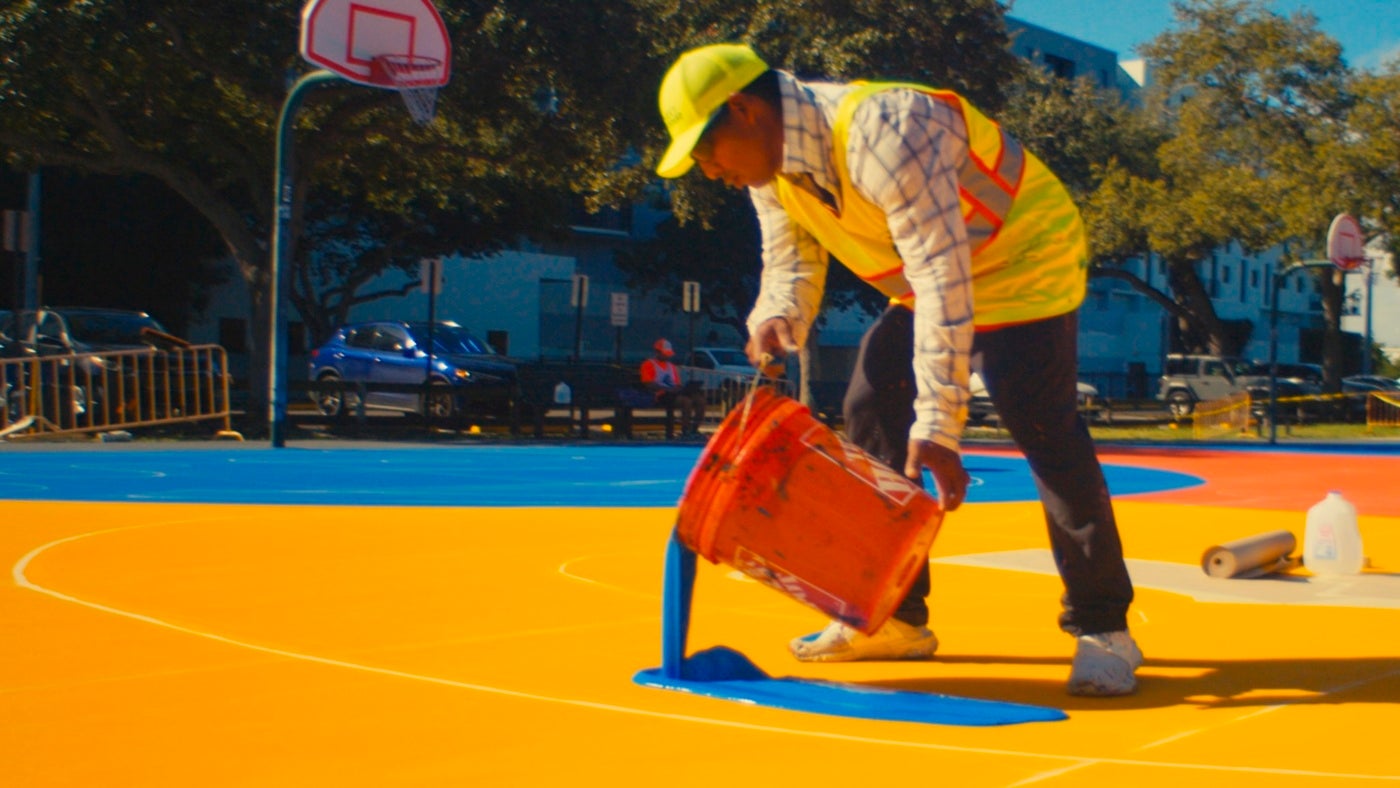
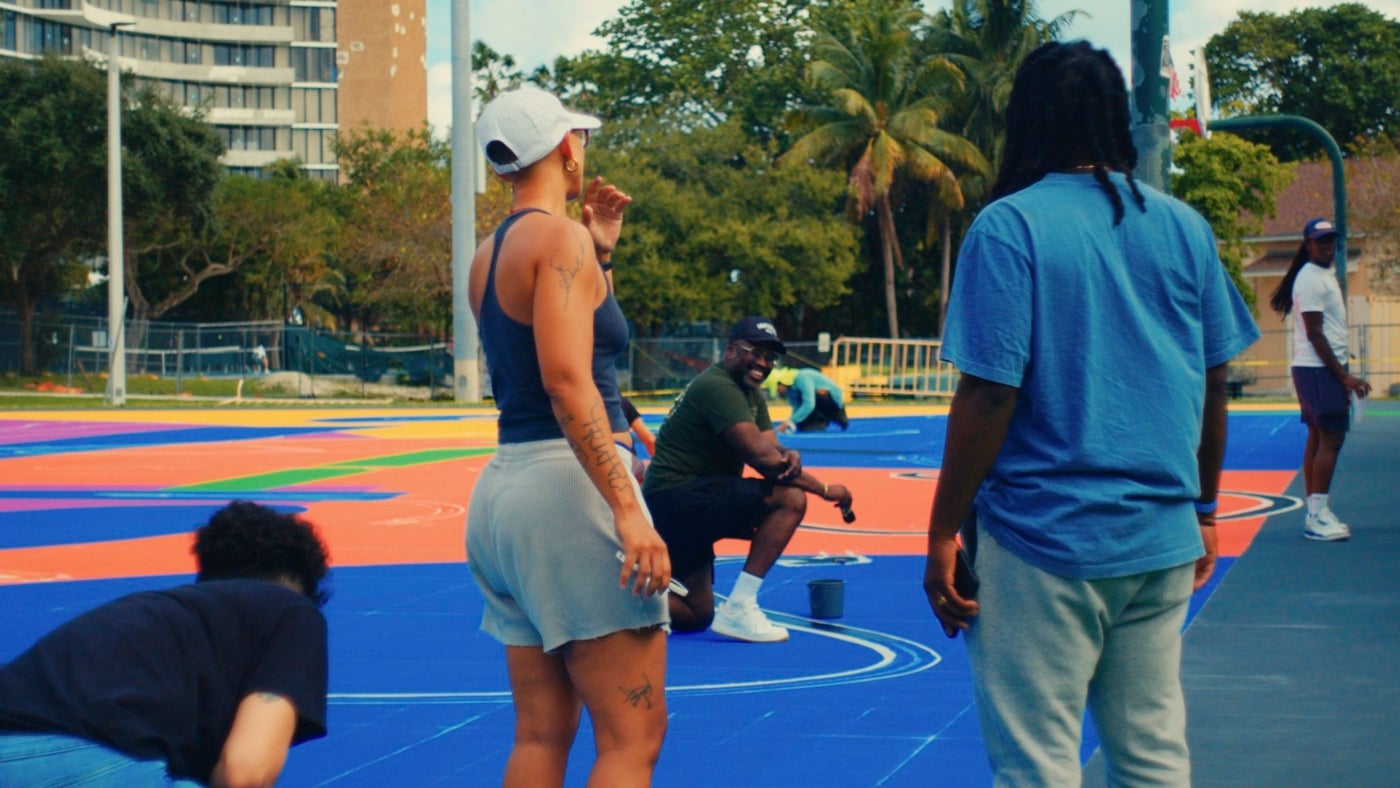
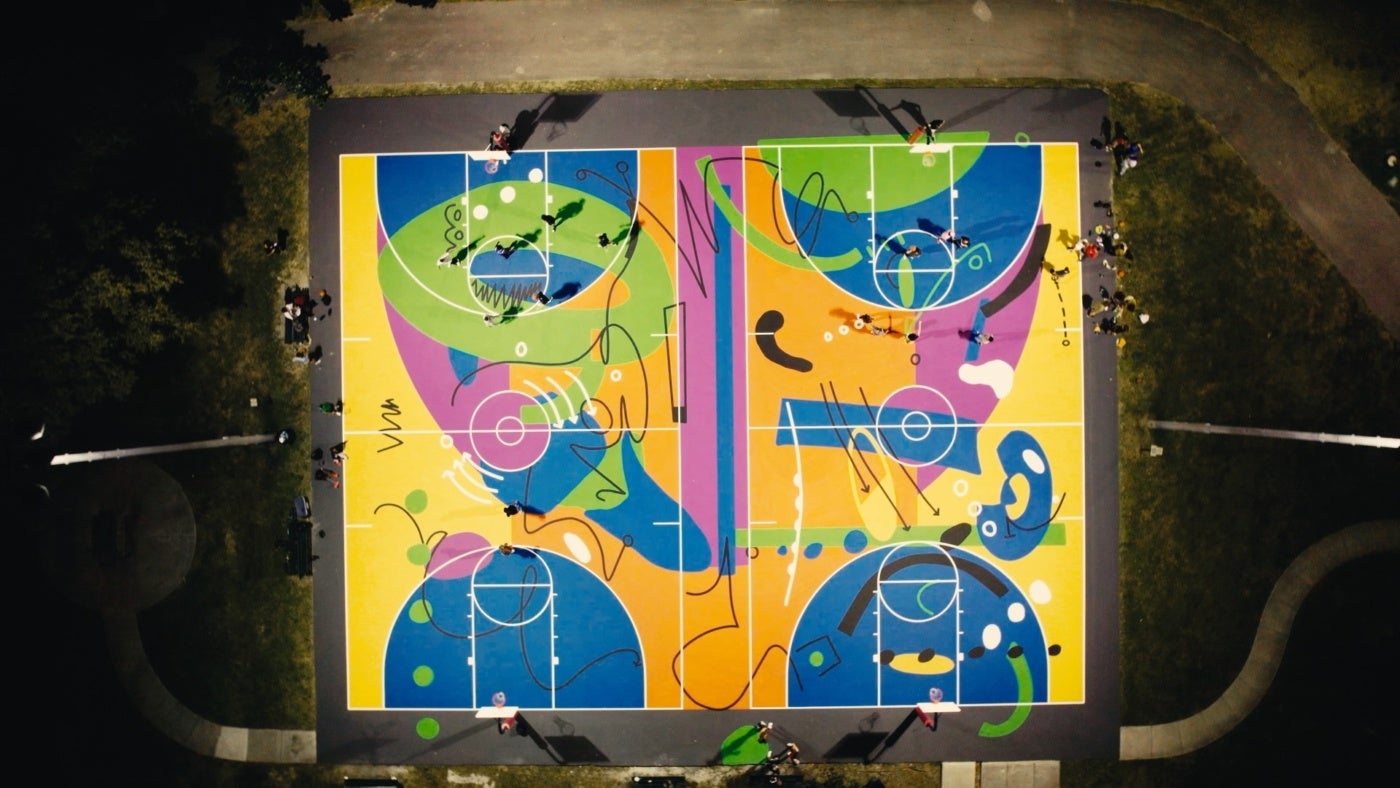
[1] Michael Graves, “Architecture and the Lost Art of Drawing,” New York Times, September 1, 2012. Quoted in Caitlin Condell, “Tangible Speculation and the Pleasure of Drawing,” Cooper Hewitt, March 16, 2015. https://www.cooperhewitt.org/2015/03/16/tangible-speculation-a-drawing-by-michael-graves/#_ftn3.
[2] Najja Moon, interview by Isabella Marie Garcia, September 10, 2025, Miami.
[3] “VIS World Off Season Club,” Miami VIS, accessed July 27, 2025. https://miamivis.com/off-season/.

